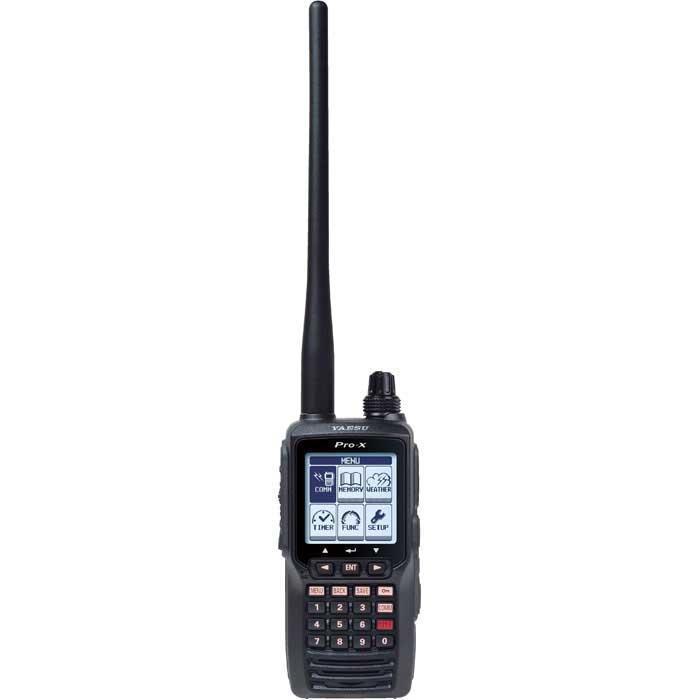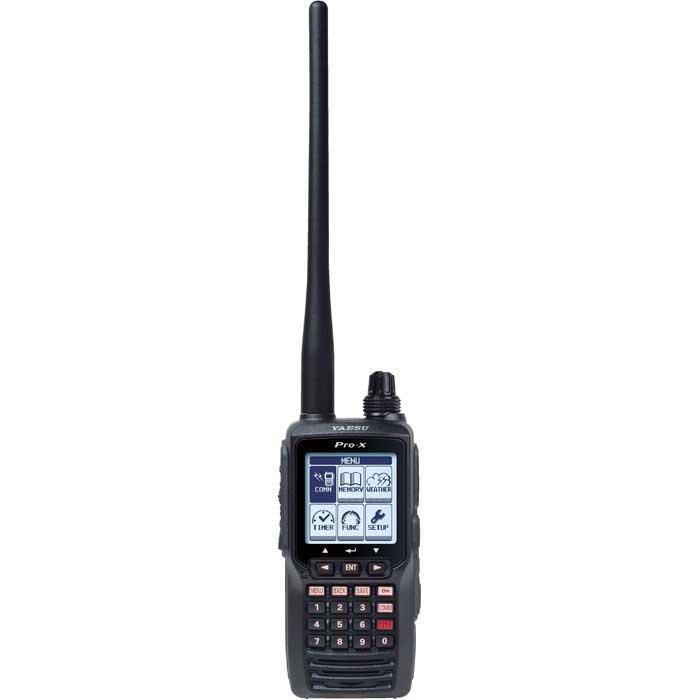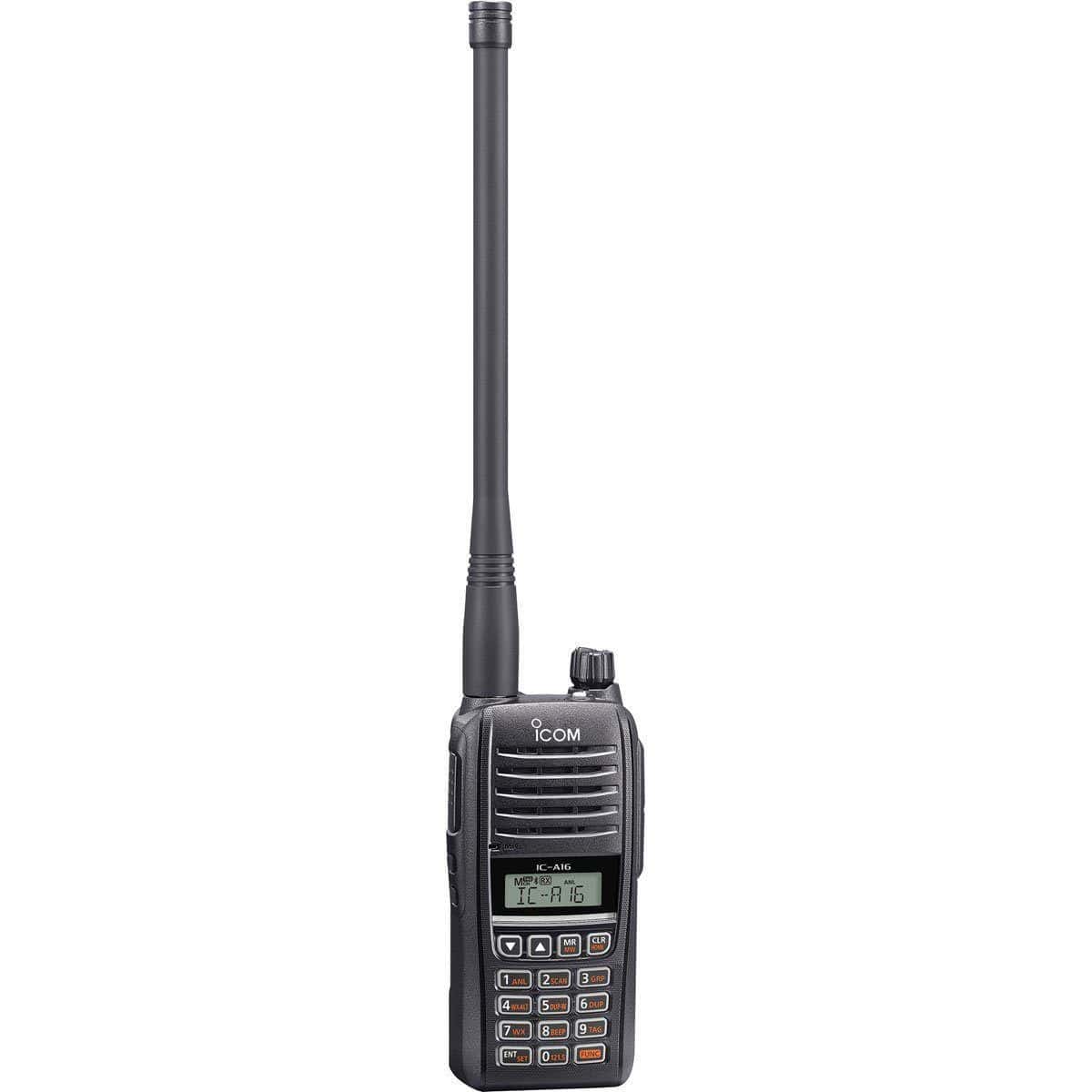Welcome to our ultimate guide on the best aviation handheld radios (transceivers) for 2025. Whether you're a student pilot searching for the best handheld aviation radio for student pilots, a seasoned professional needing a radio with long battery life, or someone looking for an affordable aviation handheld transceiver, we've got you covered. In this comprehensive review, we cover 10 top radios—including 8 handheld models—plus a robust base station for FBOs and a panel mount transceiver for aircraft installation.
Best Aviation Handheld Radios on The Market
In aviation, clear and reliable communication is critical. Handheld radios (transceivers) provide pilots with portable backup solutions, enable pre-flight ATIS checks, and serve as essential tools during emergencies. Our 2025 guide reviews the best aviation radios available—covering advanced COM/NAV/GPS handheld models as well as specialized base stations and panel mount transceivers.
Why Do You Need an Aviation Handheld Radio?

Even if your aircraft already has a panel mount radio, a handheld transceiver provides vital redundancy and flexibility. It’s an indispensable backup in emergencies, helps save valuable time during pre-flight checks, and is an excellent learning tool for student pilots.
- Portability: Carry your radio wherever you go.
- Cost Savings: Avoid extra rental charges with your personal device.
- Learning Benefits: Hone communication skills by listening to live ATC.
- Enhanced Flexibility: Many models offer both COM and NAV features.
What to Look For When Shopping for an Aviation Radio
With so many options available, choose a radio based on the features that matter most to you. Consider these essential factors:
Battery Life
Look for models with long battery life—an especially critical factor if you’re after the best handheld aviation radio for student pilots or for long flights.
Frequency Ranges
Ensure the radio covers the full VHF airband and, if needed, supports additional navigational frequencies (VOR, ILS, GPS).
Ease of Use & Display
A clear, backlit display and intuitive controls are essential for operation under challenging conditions.
Durability & Portability
Choose a lightweight yet rugged design that withstands rough handling and adverse weather.
Additional Features
Extra features like Bluetooth connectivity, ample memory channels, and emergency distress functions can add significant value.
For more insights, check out our Aviation Transceivers Collection.
Comparison Table of Key Specifications
| Product | Radio Type | Functionality | Key Features |
|---|---|---|---|
| Icom A220 | Panel Mount | COM | Reliable panel installation; robust performance |
| Icom IC-A120 | Base Station | COM | Ideal for FBOs; dependable ground communication |
| Icom IC-A16B | Handheld | COM + Bluetooth | Bluetooth integration; dual charging; rugged |
| Icom IC-A25C | Handheld | COM Only | Simplified interface; lightweight; clear audio |
| Icom IC-A25C-S | Handheld | COM Only (Sport) | Sleek design; enhanced audio clarity |
| Icom IC-A25N | Handheld | NAV/COM/GPS | Integrated navigation; Bluetooth; high memory |
| Yaesu FTA-450L | Handheld | COM Only | Li-Ion powered; lightweight; ideal for daily use |
| Yaesu FTA-550 AA | Handheld | COM Only | AA battery powered; compact; affordable |
| Yaesu FTA-550L | Handheld | COM Only | Li-Ion battery; long battery life; robust memory |
| Yaesu FTA-850L | Handheld | COM/NAV/GPS | Integrated GPS; full-color TFT; rugged build |
Detailed Reviews of Top Aviation Handheld Radios
Icom IC-A16B (COM) Handheld VHF Transceiver with Bluetooth

Designed for pilots who need a reliable, compact communication solution, the Icom IC-A16B features Bluetooth connectivity for hands-free operation and seamless integration with modern aviation headsets. It’s ideal for those seeking an affordable aviation handheld transceiver with long battery life.
- Easy-to-read display
- Dual charging options (DC/AC)
- Rugged, lightweight design
Icom IC-A25C (COM ONLY) Handheld VHF Transceiver

A streamlined communication-only radio, the Icom IC-A25C is perfect for pilots who want reliable performance without extra navigation features. It’s an excellent choice for those seeking the best handheld aviation radio for student pilots on a budget.
- Compact and durable design
- User-friendly interface
- Optimized for clear voice transmission
Icom IC-A25C-S (SPORT COM ONLY) Handheld VHF Transceiver

The SPORT version of Icom’s COM-only handheld transceiver offers a sleek design with enhanced audio clarity. Perfect for pilots who value portability and ease-of-use.
- Lightweight and compact
- Enhanced audio performance
- Quick frequency switching
See the video above for a demonstration of Icom’s radio models.
Icom IC-A25N (NAV/COMM/VOR & GPS) Handheld VHF Transceiver

Combining advanced navigation and communication, the Icom IC-A25N is ideal for pilots requiring dual functionality in one compact device. With integrated VOR, GPS, and COM capabilities, this radio is perfect for IFR operations.
- Bluetooth connectivity
- High memory channel capacity
- Bright LCD display
See the video above for a demonstration of Icom’s radio models.
Yaesu FTA-450L (COMM ONLY) Handheld VHF Transceiver

A communications-only handheld radio from Yaesu, the FTA-450L runs on Li-Ion batteries and offers a lightweight, reliable solution for everyday ATIS checks and voice communication.
- Long-lasting Li-Ion battery
- Simple, intuitive interface
- Ideal for routine communications
Yaesu FTA-550 AA Handheld VHF Transceiver

Powered by AA batteries, the Yaesu FTA-550 AA is an affordable and compact handheld radio ideal for pilots seeking a no-frills, dependable communication solution.
- Compact design with AA battery power
- Reliable NOAA weather channel reception
- Durable for daily use
Yaesu FTA-550L Li-Ion Handheld VHF Transceiver

The Yaesu FTA-550L, powered by a Li-Ion battery, offers efficient power management and robust communication performance. It’s an excellent choice for pilots seeking an affordable yet reliable transceiver.
- Efficient Li-Ion battery
- Optimized for clear audio and robust memory storage
- Compact and lightweight design
Yaesu FTA-850L Handheld VHF Transceiver w/GPS

The Yaesu FTA-850L integrates advanced GPS navigation with high-quality communication performance. Built to rugged standards, it’s perfect for IFR operations and pilots who demand comprehensive functionality.
- Integrated GPS and full-color TFT display
- Rugged construction (MIL-STD-810H, IPX-5)
- Advanced COM/NAV features for IFR use
Specialized Aviation Radios
In addition to our top handheld models, we offer two specialized aviation radios:
Icom A220 VHF Panel Mount Transceiver

A reliable panel mount radio designed for permanent installation in aircraft, the Icom A220 offers consistent performance and clear communication.
Icom IC-A120 – VHF Air Band Transceiver – Base Station

Ideal for FBO operations, this robust base station delivers dependable ground communication and enhanced reliability.
How to Measure for the Perfect Radio Fit
While handheld radios are designed for portability, if you plan to mount them or integrate them with accessories, it’s important to know your spatial requirements. Follow these steps:
- Measure the device dimensions: Ensure the radio’s size fits your cockpit or mounting area.
- Consider accessory space: Account for attachments such as headsets or external battery packs.
- Verify compatibility: Confirm that the radio supports your needs—whether COM-only or COM/NAV.
Pilot Radio Care & Maintenance
Keep your aviation radio in top condition with these tips:
- Clean regularly: Wipe down the exterior with a soft, damp cloth and avoid harsh chemicals.
- Battery care: Recharge or replace batteries as recommended by the manufacturer.
- Inspect connections: Check cables, connectors, and mounting brackets frequently.
- Store properly: Use a protective case when the radio isn’t in use.
Pro Tips for Optimizing Your Aviation Radio Use

- Plan Your Frequencies: Pre-program essential channels to reduce on-the-fly adjustments. (Learn more about COM/NAV radios here.)
- Use Quality Headsets: Enhance audio clarity by pairing your radio with a top-rated aviation headset.
- Test Battery Life: Monitor your battery status regularly to ensure reliability during flights.
- Practice Makes Perfect: Familiarize yourself with your radio’s controls in ground simulations to build confidence and efficiency.
- For Student Pilots: Practice using your radio to communicate with Flight Service for weather briefings.
- For Mountainous Terrain: Consider a radio with enhanced range capabilities to overcome challenging geography.
- For International Flying: Ensure your radio is programmed with the necessary frequencies for your destination.
Frequently Asked Questions About Aviation Radios
- Q1: Why do I need a handheld aviation radio?
-
Handheld radios offer critical redundancy in case of panel mount failure, provide portable communication during pre-flight checks, and serve as an excellent learning tool for student pilots.
- Q2: What are the key features to consider when buying an aviation radio?
-
Key factors include long battery life, comprehensive frequency coverage, ease of use, durability, and additional features such as Bluetooth connectivity and integrated GPS for COM/NAV models.
- Q3: How does the navigation function work on a COM/NAV radio?
-
COM/NAV radios combine communication with navigational features such as VOR, ILS, and GPS, enabling pilots to access critical navigational data along with voice communication.
- Q4: Are handheld radios durable enough for daily use?
-
Yes, most aviation radios are designed to withstand rough handling and harsh conditions. Look for models with rugged construction and high water protection ratings (IPX5 or higher).
- Q5: Can I use my radio with Bluetooth headsets?
-
Many modern models—such as the Icom IC-A16B—include Bluetooth connectivity, allowing you to pair with wireless headsets for improved cockpit clarity and convenience.
- Q6: What is the difference between COM-only and COM/NAV radios?
-
COM-only radios focus solely on communication, offering a simpler interface and lower cost. COM/NAV radios provide additional navigational aids (like VOR and GPS), ideal for IFR operations.
Final Takeaway
The best aviation radios provide the reliability, redundancy, and advanced features necessary for safe and efficient flight. Whether you choose one of our top-rated handheld transceivers—known for long battery life, clear audio, and rugged durability—or opt for a specialized base station or panel mount unit, investing in a dependable radio is essential. Our guide covers everything from key features and customer concerns to expert pro tips. Choose the model that best fits your operational needs and flying style.
Have questions or want to share your experience? Leave a comment below and join the conversation!
Interested in Flight Training Tools?
Our guides are designed to help you excel in every aspect of your flight training and cockpit organization.







